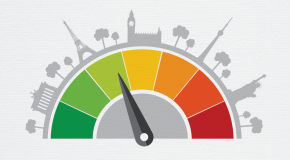The tracking tool allows users to select a state and year to view changes in energy usage over time. In-depth profiles of each state address historic trends in the energy mix, as well as key energy-consuming sectors and how a state compares relative to others in its energy use.
Our research offers a granular and local view of energy consumption, highlighting trends such as the following:
- Use of coal has been on the decline, but still comprises a sizable share of the energy mix in certain states where local production is high. For example, West Virginia and Indiana rely on coal as a main source of energy. Both states are also large coal producers, ranking second and sixth in the US, respectively.
- Natural gas has been on the rise since 2000, and in some states it has surpassed oil and coal as a main source of energy. Alabama illustrates this phenomenon--use of natural gas now makes up a greater share of the state's energy mix than coal.
- Although renewable sources comprise a small share of the US energy mix, their use has seen explosive growth in recent years. In Kansas, for example, renewable energy consumption has grown fifteen-fold since 2000.
- States with high industrial activity consume more energy than those with large commercial sectors. The industrial sectors of Louisiana and Wyoming account for over half of energy consumed in those states. Both states rank first and second, respectively, in per capita energy consumption, with each at nearly triple the national average.
- States with large land mass and those with logistics hubs and/or high commercial aviation activity tend to consume more energy in their transportation sector than for residential, industrial or commercial use. Examples are Tennessee, where a major FedEx hub is located in Memphis, and Florida, where there is heavy airport traffic.
For a closer look at how states consume energy, please visit http://trackingenergydemandtrends.eiu.com/
The views and opinions expressed in this article are those of the authors and do not necessarily reflect the views of The Economist Intelligence Unit Limited (EIU) or any other member of The Economist Group. The Economist Group (including the EIU) cannot accept any responsibility or liability for reliance by any person on this article or any of the information, opinions or conclusions set out in the article.




